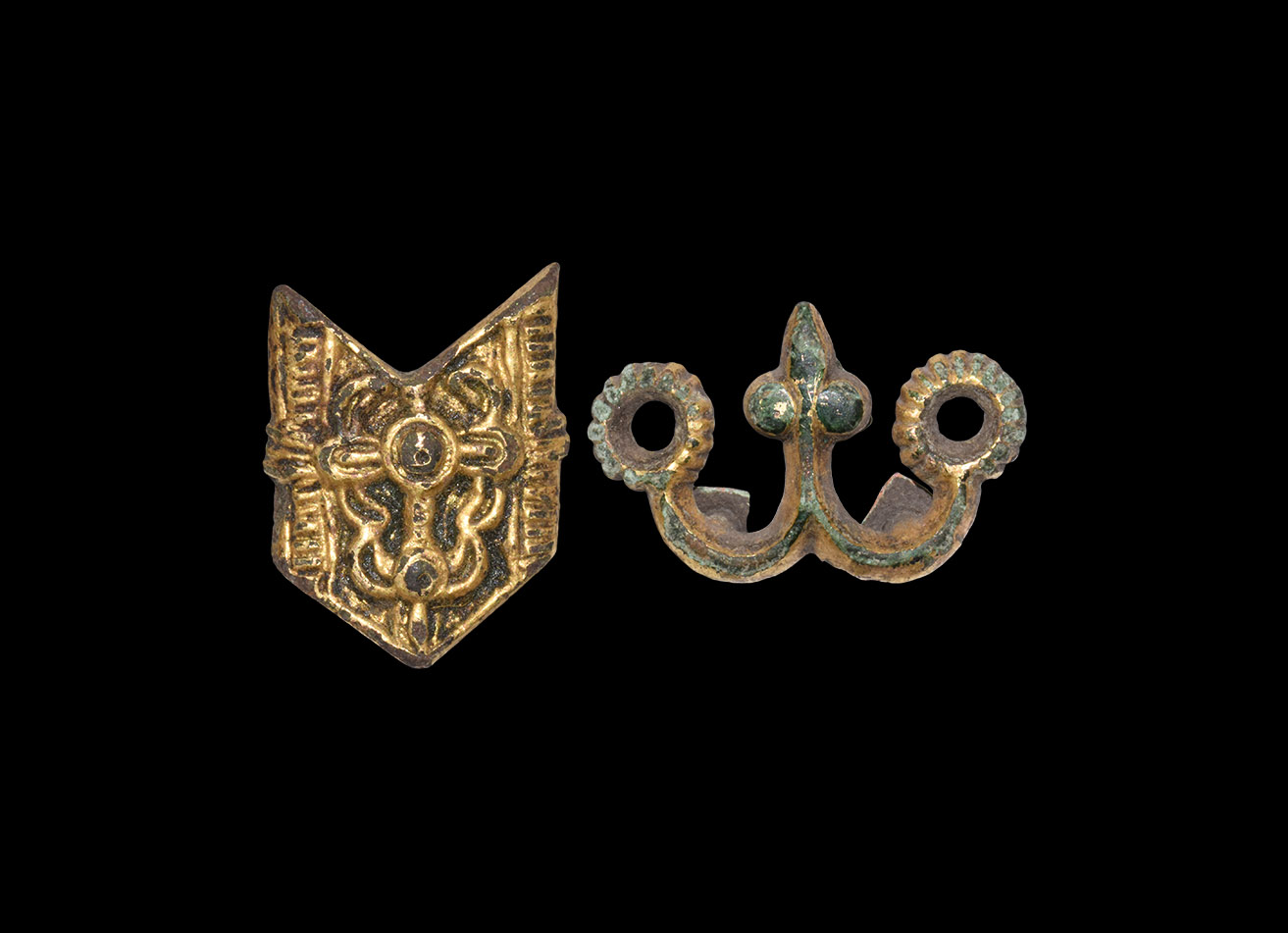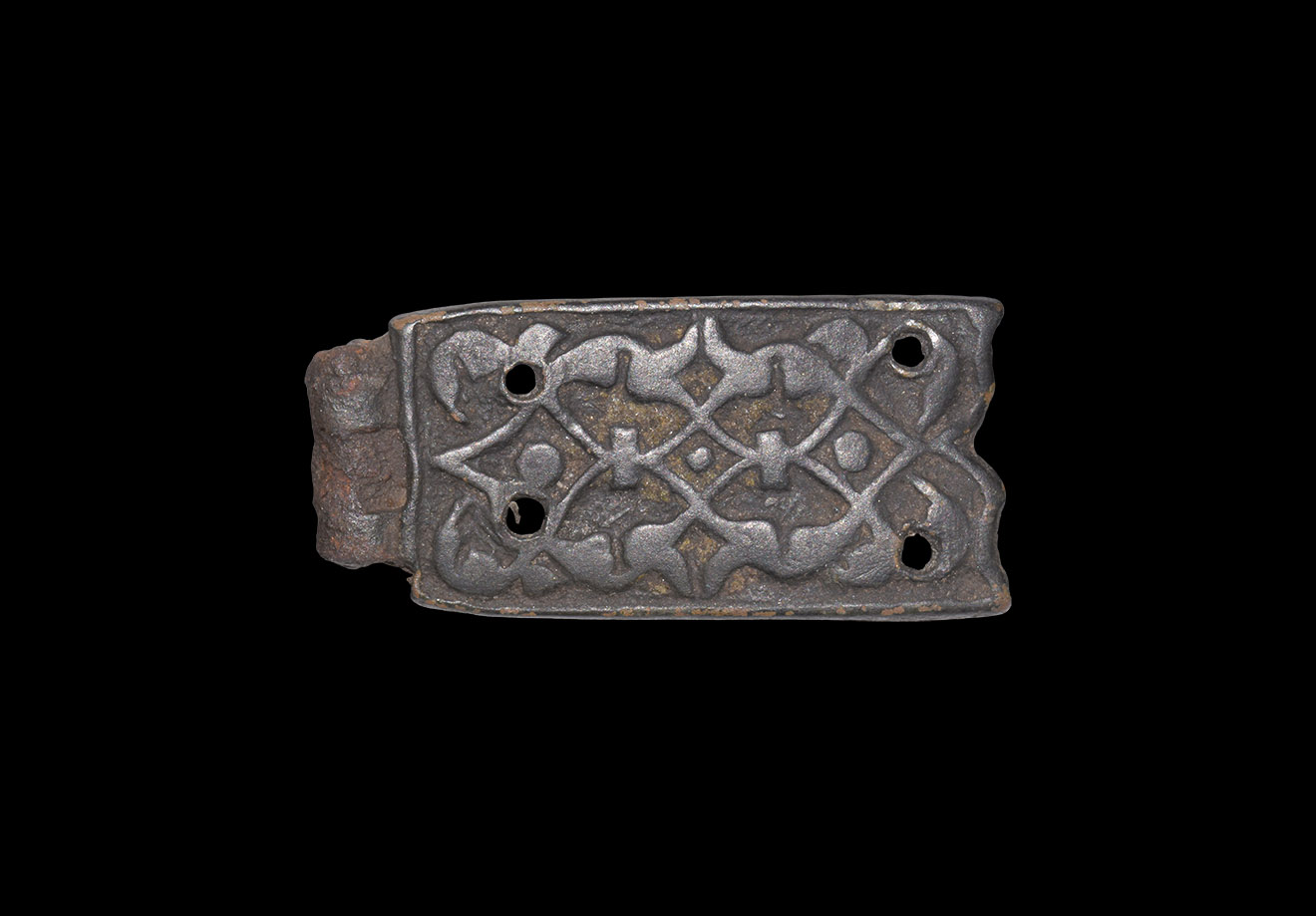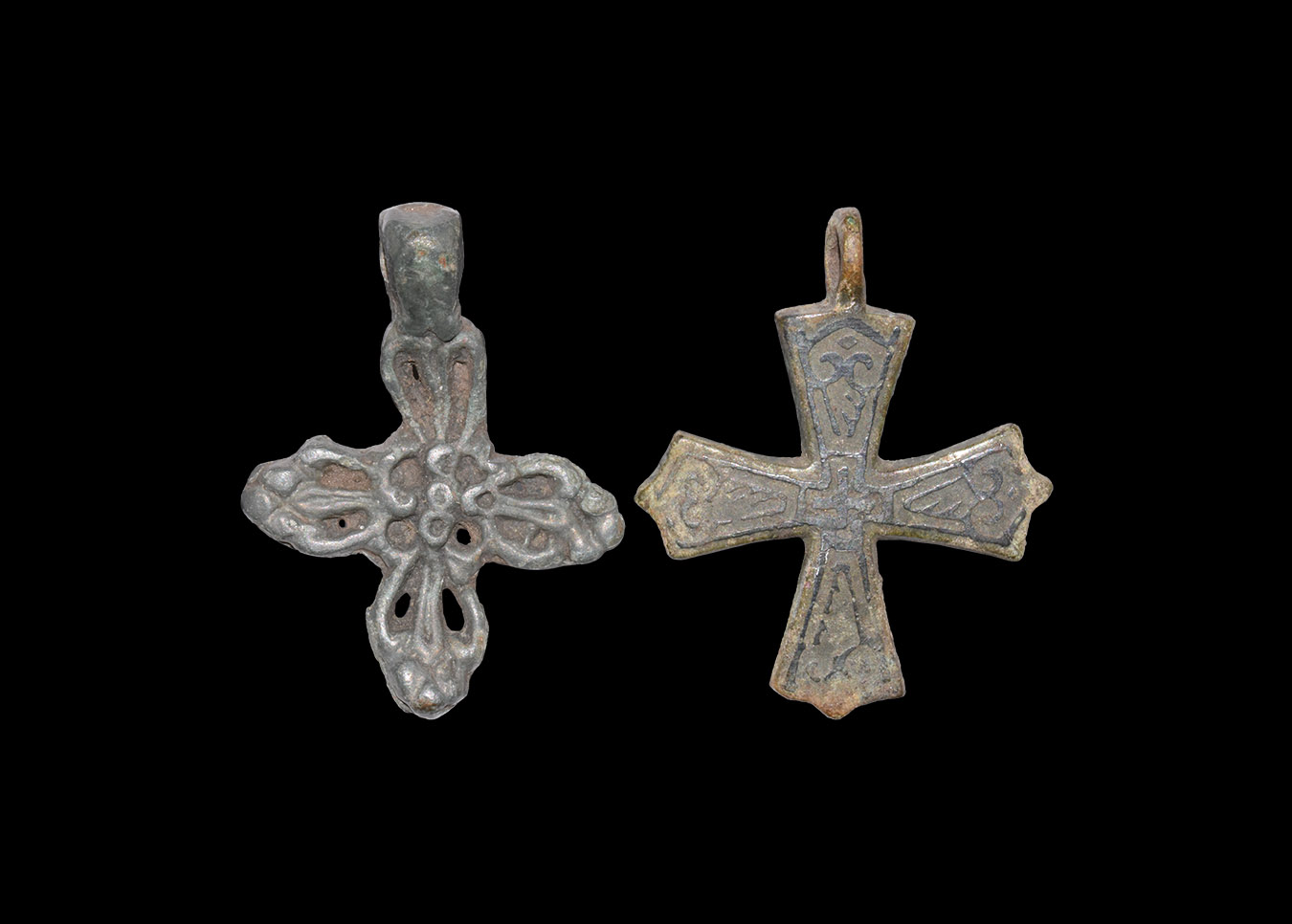ALEMANNIC OR SAXON GOLD CROSS MOUNT 6th-9th century AD A flat discoid gold mount with four holes for attachment pins, beaded wire border, central annular cell and four radiating piriform cells, the centre with an iridescent glass insert. 0.94 grams, 18mm (3/4"). [No Reserve] Condition Fair condition. Provenance Property of a gentleman; formerly in a private collection; acquired on the UK art market. Literature See Archäologisches Landesmuseum Baden-Württemberg Die Alemannen, Stuttgart, 1997; Parfitt, K. & Anderson, T. Buckland Anglo-Saxon Cemetery Dover, Archaeology of Canterbury New Series vol. VI, Canterbury, 2012; Webster, L. & Backhouse, J. The Making of England. Anglo-Saxon Art and Culture AD 600-900, London, 1991. Footnotes The mount is of a popular form with examples known from the 6th century onwards. The gold sheet is undecorated apart from the applied cells which originally housed glass, millefiori or possible garnet cloison inserts. Examples used as brooches occur in western Europe, for example among the Alemannic material from Oerlingen, Switzerland (e.g. Archäologisches Landesmuseum Baden-Württemberg, 1997, item 387) as well as from Anglo-Saxon England (e.g. Webster & Backhouse, p.55). The lack of repoussé decoration on the plate suggests a later
ALEMANNIC OR SAXON GOLD CROSS MOUNT 6th-9th century AD A flat discoid gold mount with four holes for attachment pins, beaded wire border, central annular cell and four radiating piriform cells, the centre with an iridescent glass insert. 0.94 grams, 18mm (3/4"). [No Reserve] Condition Fair condition. Provenance Property of a gentleman; formerly in a private collection; acquired on the UK art market. Literature See Archäologisches Landesmuseum Baden-Württemberg Die Alemannen, Stuttgart, 1997; Parfitt, K. & Anderson, T. Buckland Anglo-Saxon Cemetery Dover, Archaeology of Canterbury New Series vol. VI, Canterbury, 2012; Webster, L. & Backhouse, J. The Making of England. Anglo-Saxon Art and Culture AD 600-900, London, 1991. Footnotes The mount is of a popular form with examples known from the 6th century onwards. The gold sheet is undecorated apart from the applied cells which originally housed glass, millefiori or possible garnet cloison inserts. Examples used as brooches occur in western Europe, for example among the Alemannic material from Oerlingen, Switzerland (e.g. Archäologisches Landesmuseum Baden-Württemberg, 1997, item 387) as well as from Anglo-Saxon England (e.g. Webster & Backhouse, p.55). The lack of repoussé decoration on the plate suggests a later







.jpg)



.jpg)



Testen Sie LotSearch und seine Premium-Features 7 Tage - ohne Kosten!
Lassen Sie sich automatisch über neue Objekte in kommenden Auktionen benachrichtigen.
Suchauftrag anlegen